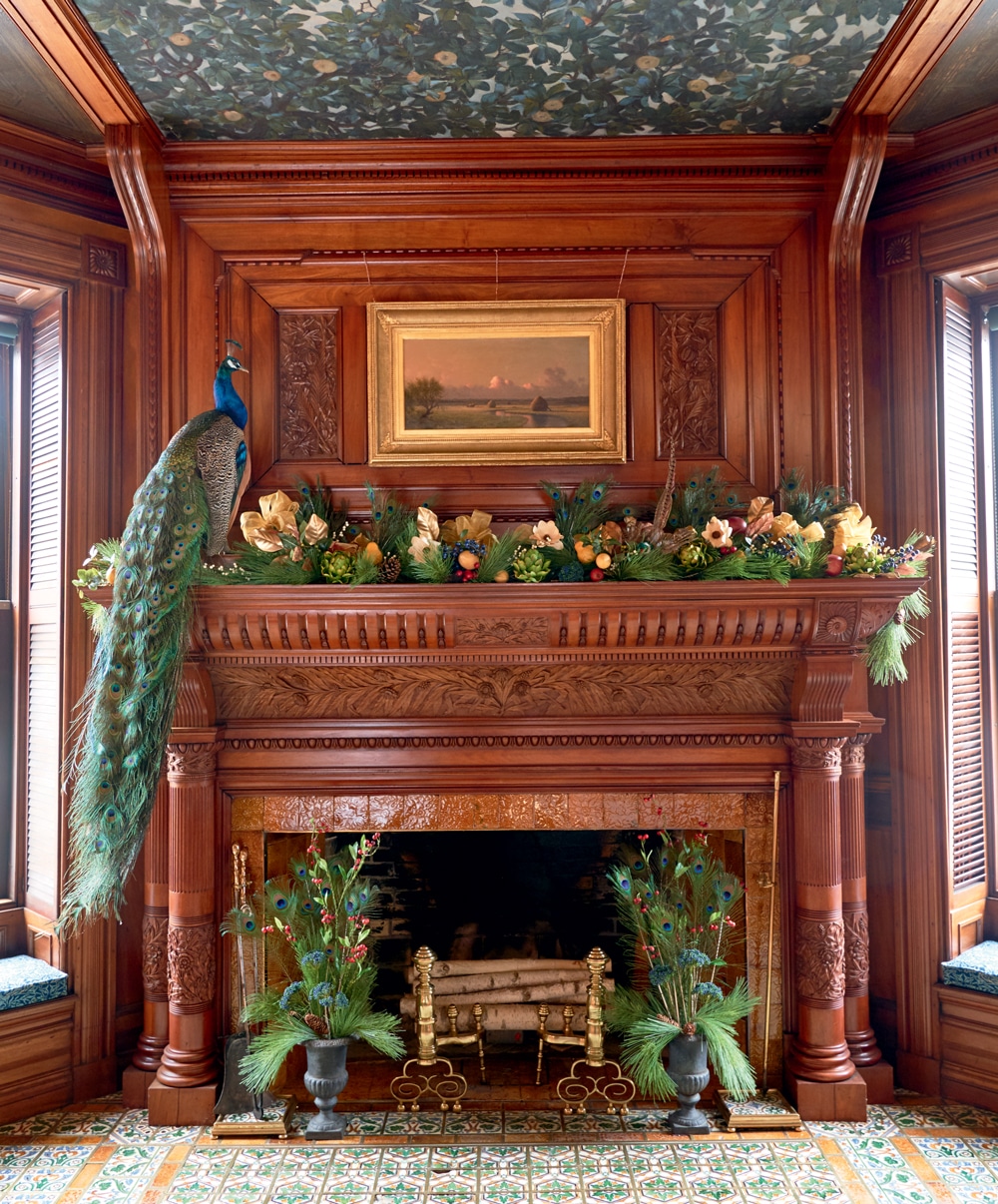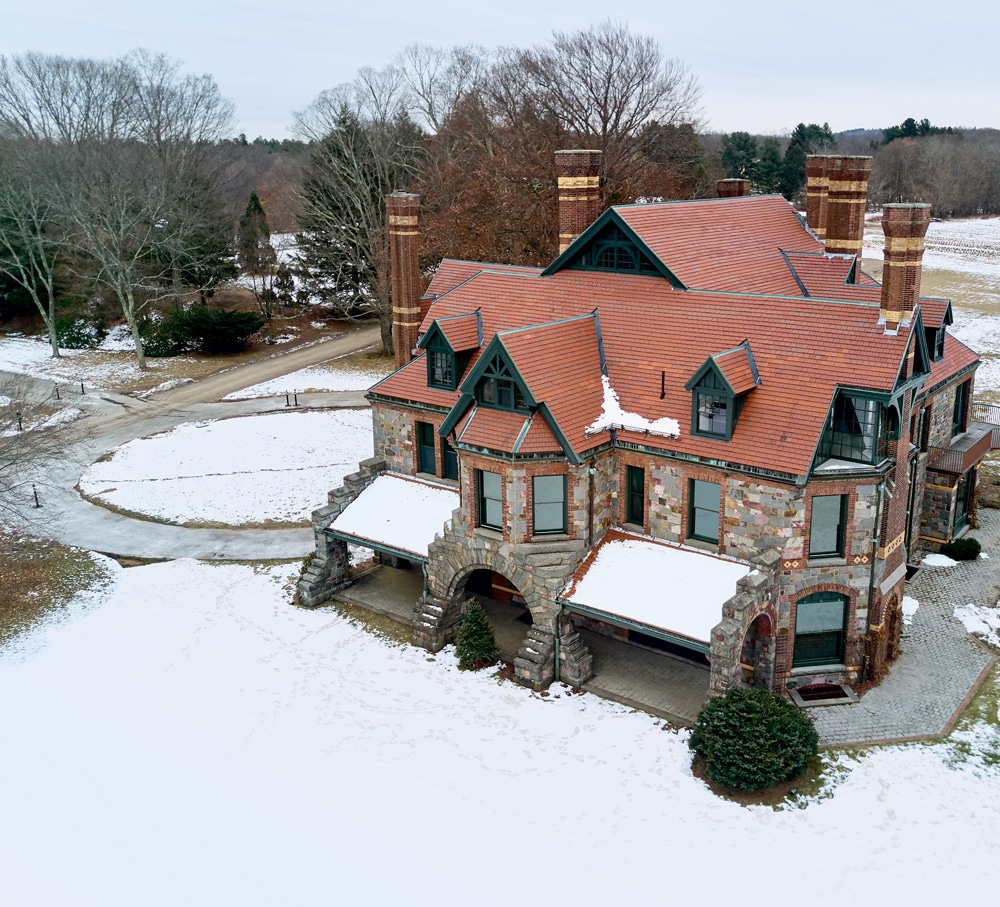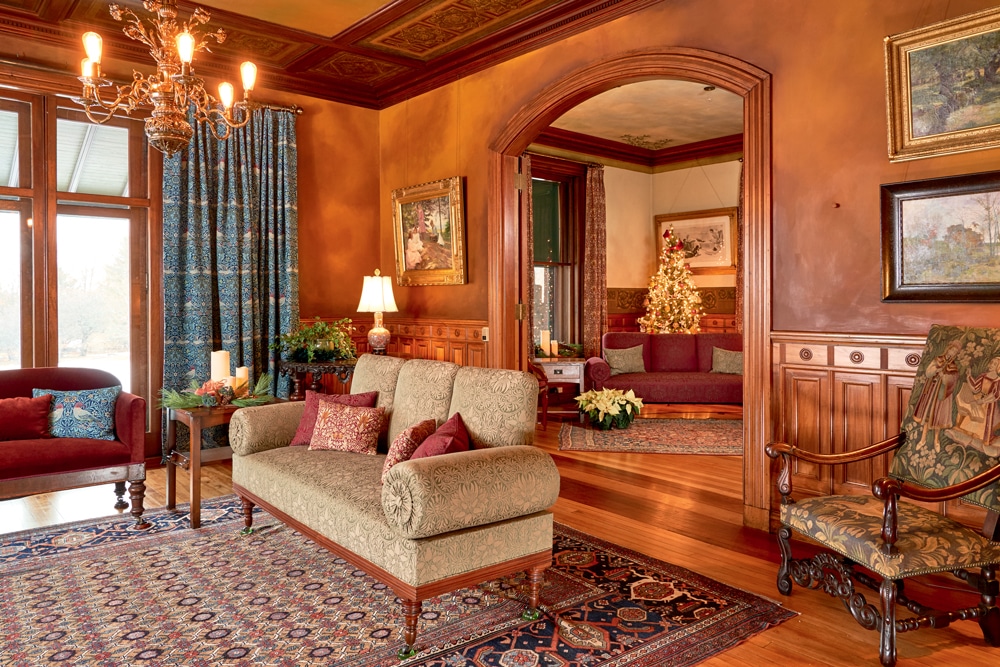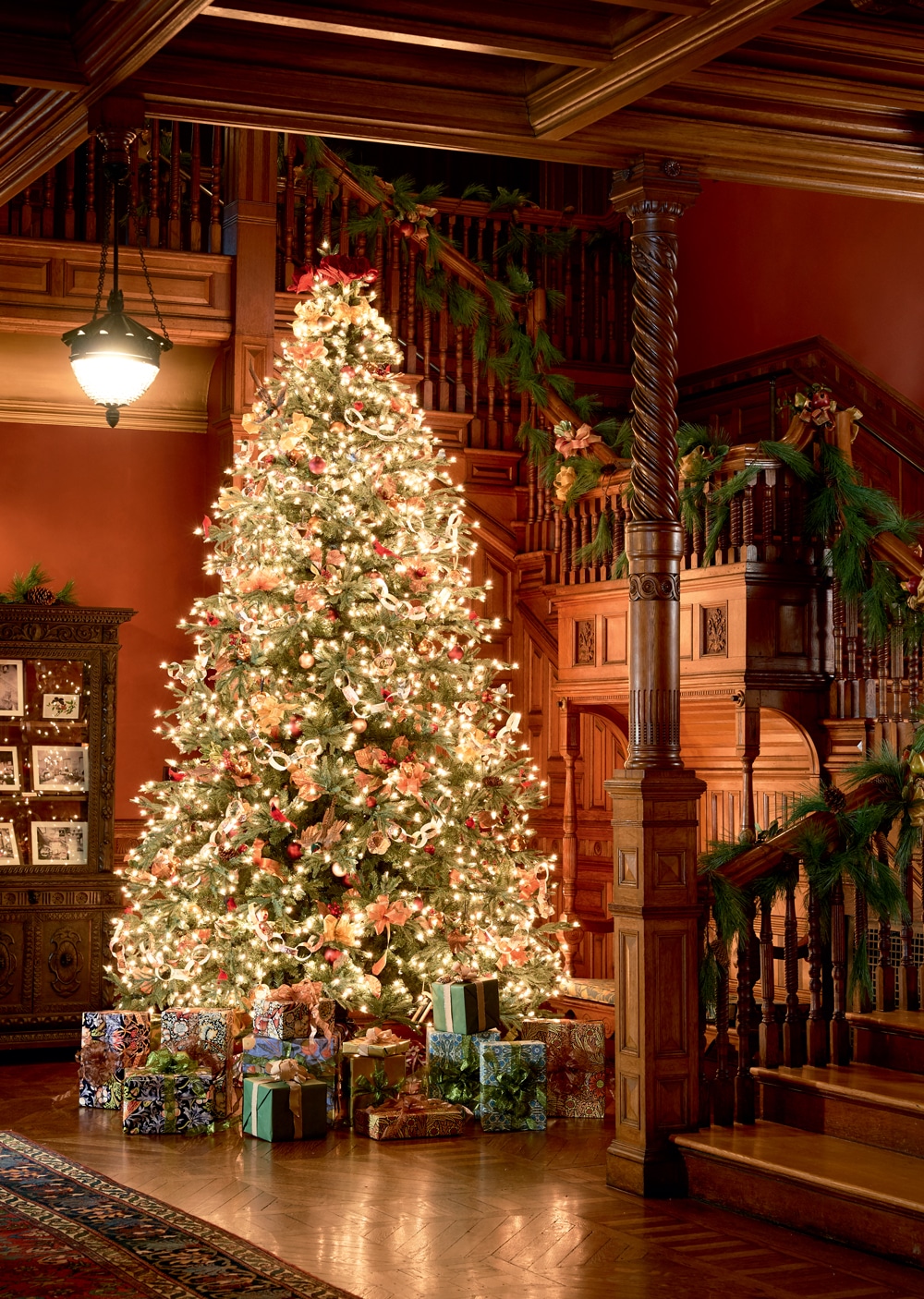If You Gild It, They Will Come | Christmas at the Eustis Estate in Milton, Massachusetts
With its display of 19th-century holiday finery, the Eustis Estate in Milton, Massachusetts, invites visitors into the seasonal magic of historic homes.

Coffee By Design | Portland, Maine
Photo Credit : Katherine KeenanIt’s late November, and you’re feeling festive. You’re the kind of person who likes guests, so your thoughts turn to Christmas decorations. And why not? You’ve got 37 houses to adorn for visitors. Time to break out the tinsel!
How frustrating to learn that, for most of your properties, such efforts are a decided no-no.
That’s more or less the position that Historic New England (HNE) has been in for years. The regional preservation organization owns and operates house museums from Maine to Rhode Island, architectural beauties that span four centuries. And in many cases, these homes would never have hosted what we consider the traditional trappings of Christmas: wreaths, ornaments, Santa Claus, stockings.
“In the past, we have followed history and didn’t interpret Christmas at our houses,” says Ken Turino, community engagement and exhibitions manager for HNE, “because [the original residents] didn’t celebrate.” Indeed, for more than two decades the Puritans outright banned the holiday because they found it too rowdy and, given that the Bible doesn’t mention December 25 as Christ’s birthday, lacking in religious justification.
Much of what we now associate with Christmas wasn’t introduced in the United States till the early 19th century. The first known sketch of an American Christmas tree appeared in 1812, and it looked like a spindly table plant. And while the Germans brought the tradition to America, it took Britain’s Queen Victoria and Prince Albert to popularize it, thanks to the December 1850 cover of Godey’s Lady’s Book showing the royal couple with a tree.
Part of HNE’s delight in acquiring the Eustis Estate—a Gilded Age mansion on 80 acres in Milton, Massachusetts, that opened to the public in 2017—is that the property allows for historically appropriate holiday exuberance. Its curators can show off both the house and a moment in the evolution of Christmas traditions in America.

Photo Credit : Mark Fleming
“We know they celebrated at the Eustis Estate,” says Turino.
“They” are W.E.C. and Edith Eustis and their three children. The couple grew up on neighboring parcels of land in Milton. When they married in 1876, Edith’s mother gifted them a parcel of land next to her own home, as well as the funds to hire William Ralph Emerson, an up-and-coming architect. He designed a showplace: a Queen Anne Revival stone mansion with decorative red and yellow brick, six chimneys, gables, and a porte cochere.
I first visited the Eustis mansion before the Christmas decorations went up, but I was still captivated by the life I imagined once took place there. Inside, the grand rooms suggest a giant Clue board, with a dining room, kitchen, library, and billiards room. Off-the-board spaces evoke Downton Abbey or Upstairs/Downstairs, with servants’ quarters, a day nursery, and a night nursery.
The house includes a basement darkroom and a third-floor laboratory, as W.E.C. was a mining engineer, inventor, and amateur photographer. Yet he was also a gentleman farmer, eager to end his Boston workdays on his own farmland. (Part of this property has long been familiar to outdoorsy Bostonians, as 118 acres were taken by eminent domain in 1893 to create Blue Hills Reservation.)

Photo Credit : Mark Fleming
A computerized kiosk in each room sparks the mansion into life, with tidbits about the family, home, grounds, and renovation. These kiosks also emphasize how profoundly the design was influenced by the Aesthetic movement, which was at the height of its popularity in 1878, when the mansion was built. Opposed to froufrou Victorian ornamentation, this movement favored earth tones, metallic finishes, flowers, and birds, according to site manager Karla Rosenstein. Devotees were intrigued by Far East motifs, decorative paint treatments, and light-colored, grain-revealing wood.

Photo Credit : Mark Fleming
“Have nothing in your houses that you do not know to be useful or believe to be beautiful,” proclaimed textile designer William Morris, famously summing up the movement’s philosophy.
Which brings us to Christmas at the Eustis Estate. For its first year celebrating, “it made sense to have a theme,” says Julie Solz, team leader for collection services. So HNE purposefully chose colors that the Aesthetic movement favored, and it plucked imagery from the William Morris textiles used throughout the mansion.
On my second visit to the Eustis mansion, I was less nostalgic for bygone Christmases (the day was balmy, with no snow on the ground) and more curious about how HNE’s intentions had played out. From the outside, the only seasonal hint was a green wreath with a red bow. Inside, however, a 12-foot Christmas tree dominated the stairwell end of the hall, its branches crowded with gold pomegranates, bronze ribbons, tiny white lights, and a multitude of bird ornaments, as well as chains and ornaments made of paper patterned with William Morris designs.
In other rooms, I admired lush poinsettias (the work of two local garden clubs), a grand wreath with a faux quail, and an elaborate garland that wound up the stairway’s handrail. And with my new education in the Aesthetic movement, I almost laughed when I stepped into the main parlor and saw the fireplace. It was as if a William Morris fabric had exploded onto the mantel in 3-D: A taxidermied peacock stood amid swags of evergreen and pinecones, pheasant and peacock feathers, and faux lemons, pears, and artichokes.

Photo Credit : Mark Fleming
“We do the holiday,” says Rosenstein, “where it starts becoming fun”—not as a grand drinking party or an overblown consumer-fest, but as a family tradition. HNE’s own entertaining additions include a scavenger hunt, story time, a craft workshop, music, and tea.
All of which suggests the Eustis Estate’s decorations don’t highlight just when Christmas started becoming fun in America, but when it was the most fun.
The Eustis Estate celebrates Christmas all through December with a slate of special events in addition to its regular admission hours. For information, go to historicnewengland.org.







